To tailor a vintage satin slip dress, start by measuring your bust, waist, and hips for a perfect fit. Compare these measurements to the dress's dimensions, noting any differences. Carefully open seams using a seam ripper—go slow to avoid damaging the delicate fabric. Adjust the seams by reducing allowances and secure them with a sewing machine. After pressing the new seams for a polished finish, inspect the fit one last time. Finally, don't forget those chic details like binding the slit edge. Ready to elevate your sewing game? You'll discover essential tips to enhance your project even further.
The Origin of the Slip Dress
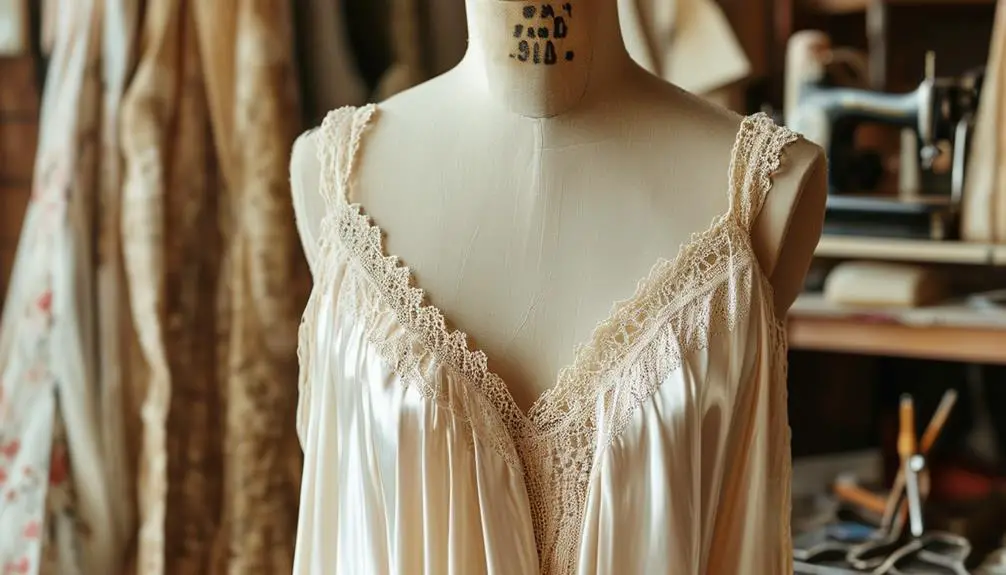
The slip dress, once a humble undergarment, has transformed into a fashion icon that defines modern elegance. Originating primarily as a bedroom piece, it gained mainstream popularity in the late 1990s, revolutionizing how you think about everyday wear.
This iconic garment was propelled into the spotlight when Diana, Princess of Wales, dazzled in a John Galliano design for Dior in 1996. Additionally, vintage variations of the slip dress, such as those produced by brands like Betty Barclay, showcase the craftsmanship and style of earlier decades.
You can't forget the influence of fashion trailblazers like Kate Moss and Courtney Love, who embraced the silk slip dress and made it a must-have in any stylish wardrobe.
The slip dress embodies the "underwear-as-outerwear" trend, making it not just acceptable but desirable to wear a piece typically associated with intimacy in everyday settings.
Its casual yet elegant aesthetic means you can effortlessly dress it up or down, depending on the occasion. Whether paired with a sleek blazer for a night out or worn alone for a laid-back brunch, it's versatile.
And if you find a vintage gem, you might even consider how to alter a slip dress to fit your unique style, ensuring it feels as stunning as it looks.
Steps to Alter a Slip Dress
Altering your vintage satin slip dress can transform it into a personalized statement piece that perfectly complements your style.
Understanding the vintage clothing trends can inspire your design choices and help you make adjustments that reflect your unique aesthetic.
Follow these essential steps to guarantee a flawless fit:
- Measure Your Body: Use a measuring tape to note your hips, bust, and waist. Document these numbers for reference to guide your alterations.
- Compare Measurements: Measure the dress at the same points. Check the differences between your body measurements and the dress's dimensions, particularly focusing on hips, bust, and waist.
- Adjust Seam Allowance: With a seam ripper, carefully open seams where needed. When cutting, remember that sewing silk requires extra care due to its delicate nature.
Reduce the seam allowances as necessary, then secure the new seams with your sewing machine.
Once you've made the adjustments, finish your dress by pressing the seams to create a polished look.
Conduct a final inspection to guarantee everything fits well.
With these steps, you'll create a stunning slip dress that showcases your unique style and fits you perfectly!
Measuring Yourself and the Dress
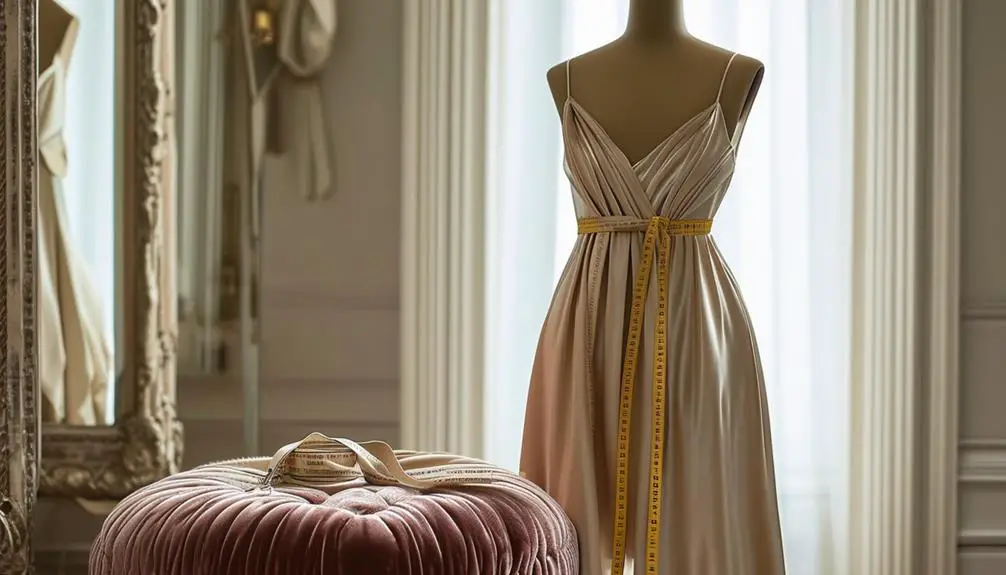
Getting the fit just right starts with accurate measurements.
Begin by measuring your body, focusing on key areas: the bust (34.25 inches), waist (28.5 inches), and hips (38 inches). Using a measuring tape, have a friend assist you for precision—this makes all the difference in ensuring you capture every curve correctly.
Next, you'll want to measure your vintage satin slip dress. Check the bust (32.875 inches), waist (34.625 inches), and hips (36.25 inches) independently.
Document both your body measurements and the dress measurements side by side. This comparison is essential, as it'll help you understand the differences between your body and the dress measurements.
Techniques for Successful Alterations
Often, successful alterations hinge on a mix of precision and technique. To guarantee your vintage satin slip dress transforms flawlessly, follow these essential steps:
- Measure Accurately: Start by measuring your body and the dress at the bust, waist, and hips. This will guide you in determining the necessary adjustments for a tailored fit.
- Remove Existing Seams: Use a seam ripper to gently take apart the existing seams. Be careful not to damage the delicate satin fabric, as clean alterations are vital for the dress's overall elegance.
- Basting and Securing: After adjusting the marked lines, employ basting techniques to temporarily hold the fabric in place. This allows you to make any last-minute fit adjustments before sewing the new seam securely.
Once you've sewn the new seams, finish by pressing them with a damp cloth to prevent damage. This guarantees that your tailored dress not only looks polished but also retains its luxurious feel.
With these techniques, you'll be well on your way to achieving a stunning, fitted vintage satin slip dress that flatters your figure beautifully.
Final Touches and Reflections
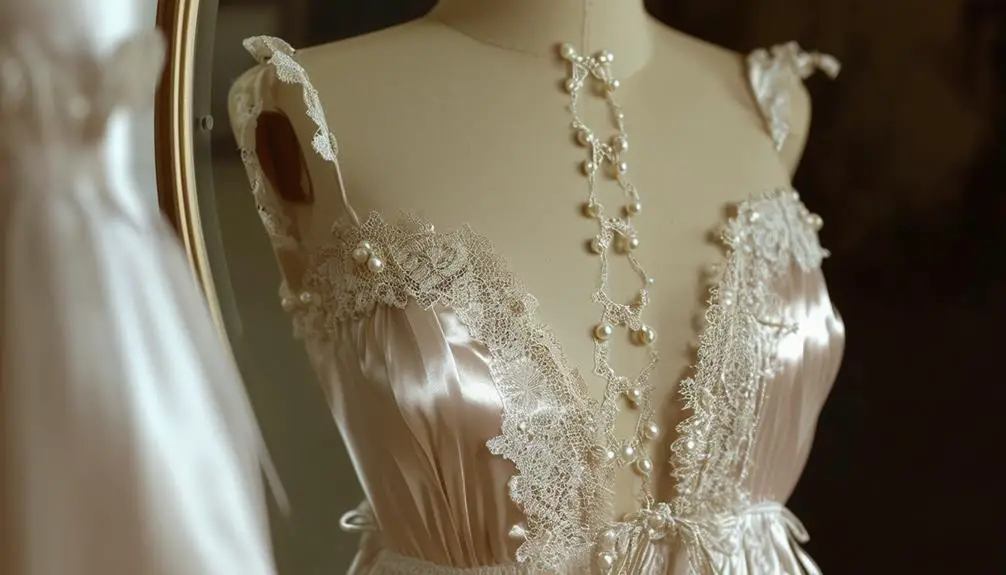
As you put the finishing touches on your vintage satin slip dress, the excitement of your hard work culminates in a polished piece that reflects your unique style.
Start by ensuring the unlined edge of the slit is beautifully finished with tulle binding. This not only adds a delicate touch but also ensures a clean, sophisticated appearance.
Next, hand stitch the remaining lining to the slit exterior. This essential step enhances the garment's durability and creates a seamless look from front to back.
As you step back and admire your handiwork, you can feel a swell of personal satisfaction with the final fit and alterations.
This experience in sewing silk will certainly inspire you to tackle future projects, pushing your boundaries with different fabrics.
Reflecting on the hand stitching techniques and the decisions you made about the final touches can help sharpen your sewing skills and prepare you for your next creative endeavor.
Frequently Asked Questions
Can Satin Slip Dresses Be Altered?
Absolutely, you can alter satin slip dresses! With some basic sewing skills, you'll find that adjusting the fit in key areas like the bust and hips can transform your vintage find into a perfect piece.
Is It Hard to Tailor a Satin Dress?
Tailoring a satin dress can be tricky. You'll need to handle the fabric delicately to avoid damage. With practice and the right tools, you'll gain confidence in altering that stunning piece to fit perfectly.
How Do You Cinch a Satin Dress Waist?
To cinch a satin dress waist, measure and mark your desired size. Carefully open side seams, gather the fabric, pin it, sew the new seam, and press for a sleek, flattering finish. You'll love the transformation!
How Can I Make My Slip Dress Look Better?
To make your slip dress look better, layer it with a fitted turtleneck, add statement accessories, and experiment with stylish footwear. Consider a tailored blazer to elevate your outfit for any occasion.
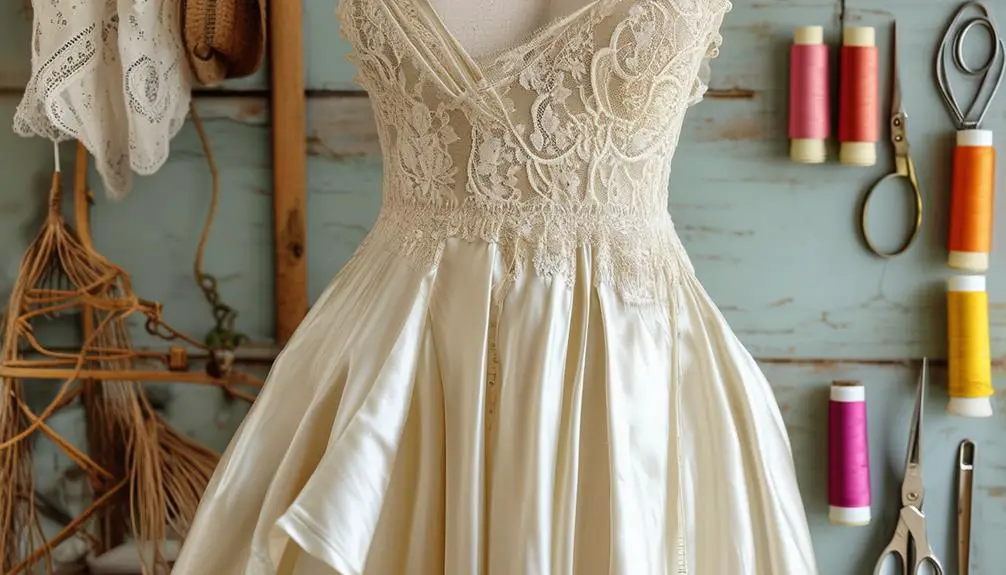


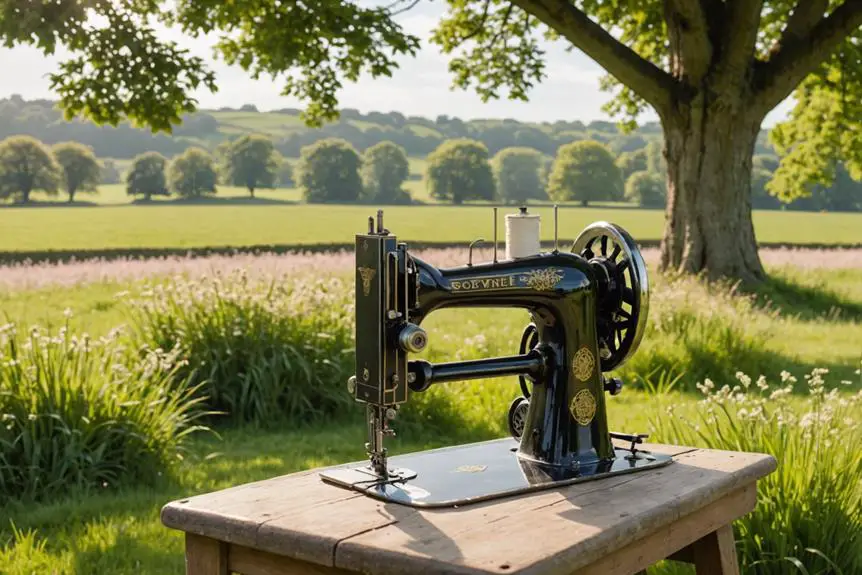

Your article helped me a lot, is there any more related content? Thanks! https://www.binance.info/en-IN/register-person?ref=UM6SMJM3
Thanks for sharing. I read many of your blog posts, cool, your blog is very good. https://www.binance.info/id/register?ref=GJY4VW8W